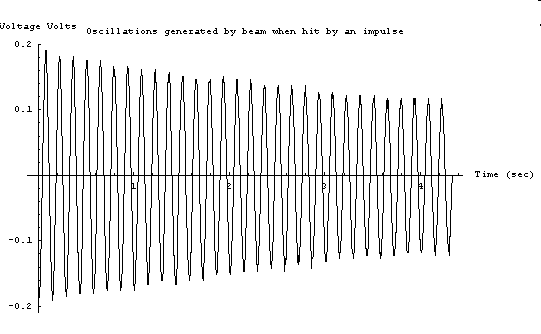
LAB #4 report. MAE 106. UCI. Winter 2005
Nasser Abbasi, LAB time: Thursday 2/3/2005 6 PM

Using Newton's law
 ,
then we get, when the origin of the coordinates systems is taken as the center
of the mass, and taking the upwards motions and forces as positive and
downwards forces as negative
,
then we get, when the origin of the coordinates systems is taken as the center
of the mass, and taking the upwards motions and forces as positive and
downwards forces as negative

Where
 is the weight of the mass. This is the force that causes the mass to be
displaced from its initial position. Let me call this force as
is the weight of the mass. This is the force that causes the mass to be
displaced from its initial position. Let me call this force as
 (which is constant in this case)
(which is constant in this case)
When we take the origin of the coordinates system as the inertial reference of
frame, whose origin is distant
 from the center of the mass, then we get
from the center of the mass, then we get

where

Hence the equation of motion becomes

Apply Laplace transform to the above ODE, we get

So, to find the transfer function between
 and
and
 , set
, set
 we get
we get

For the 0.2 g nominal range, the specification sheet says that the natural
frequency
 Hz and
Hz and

Hence since
 then
then

and
